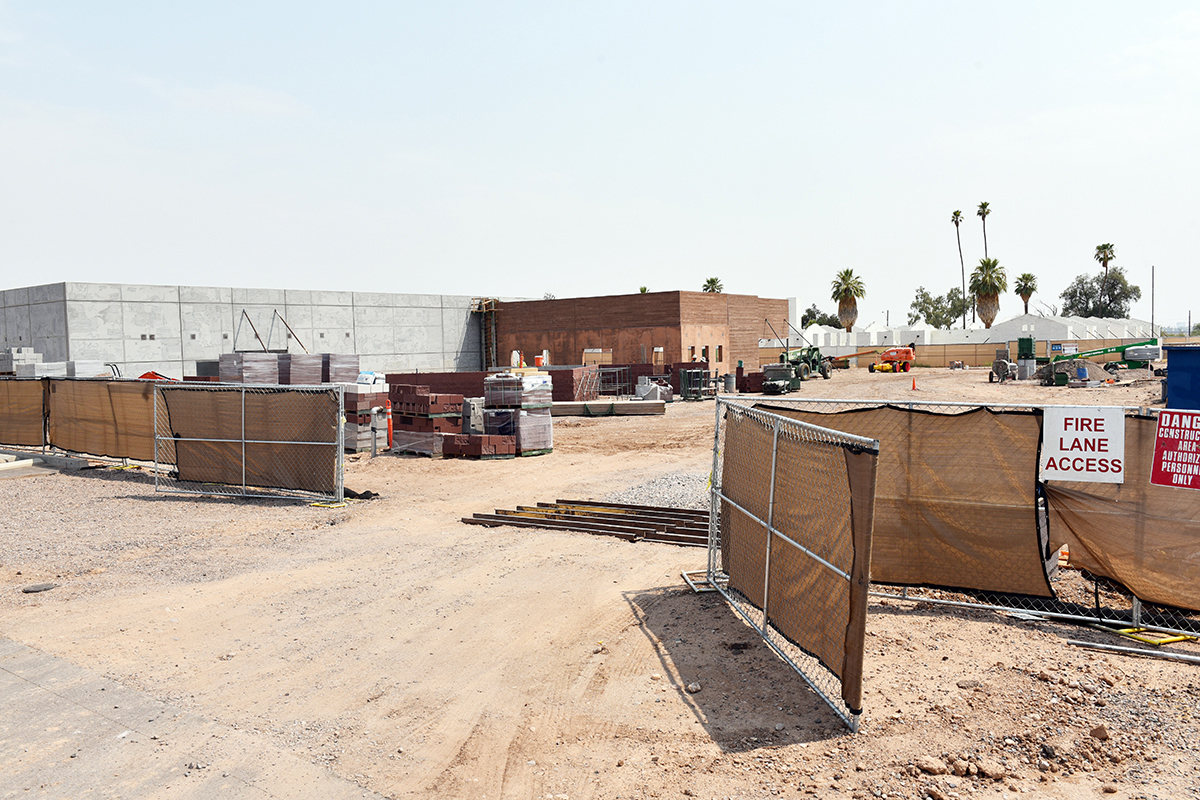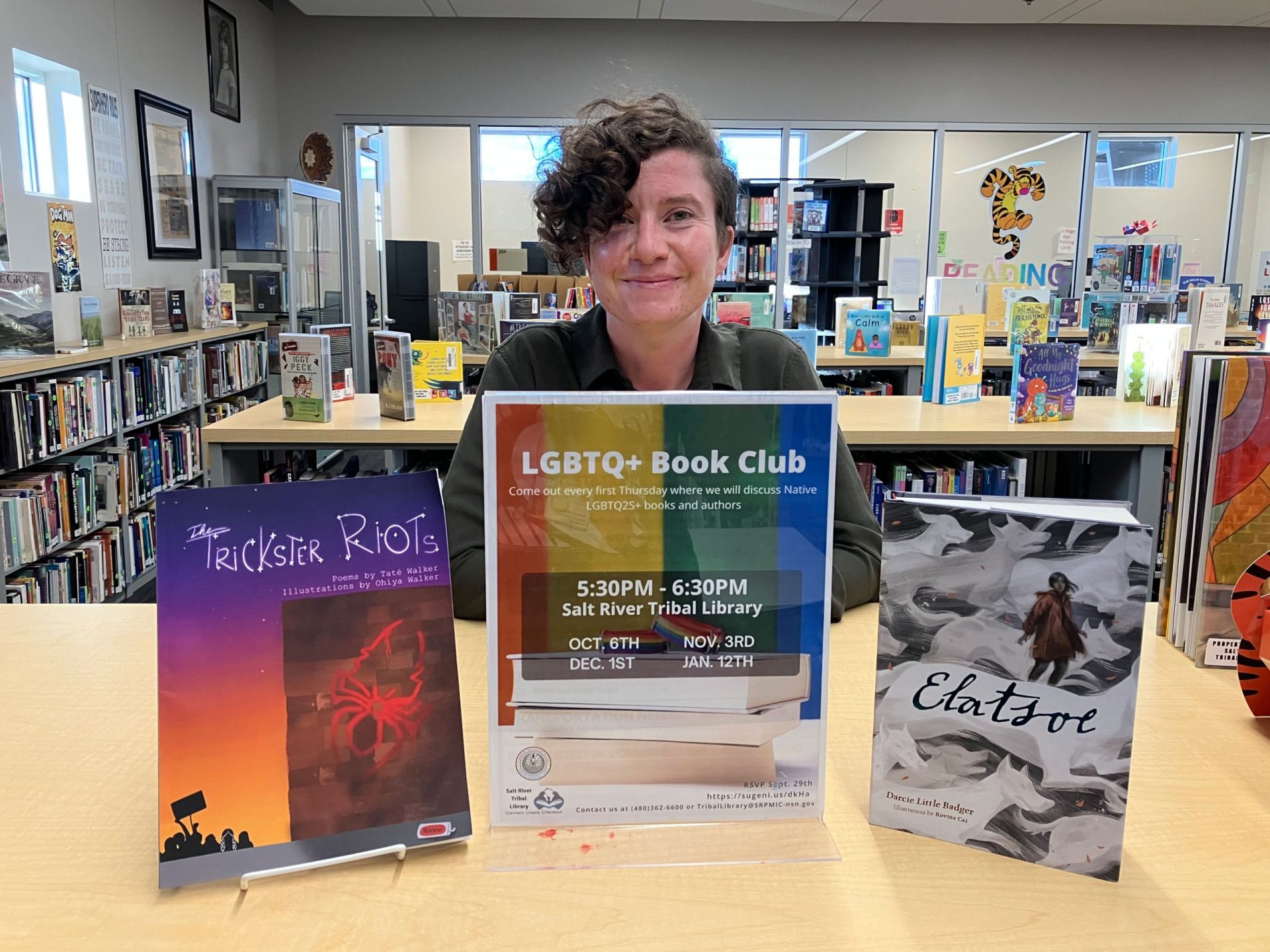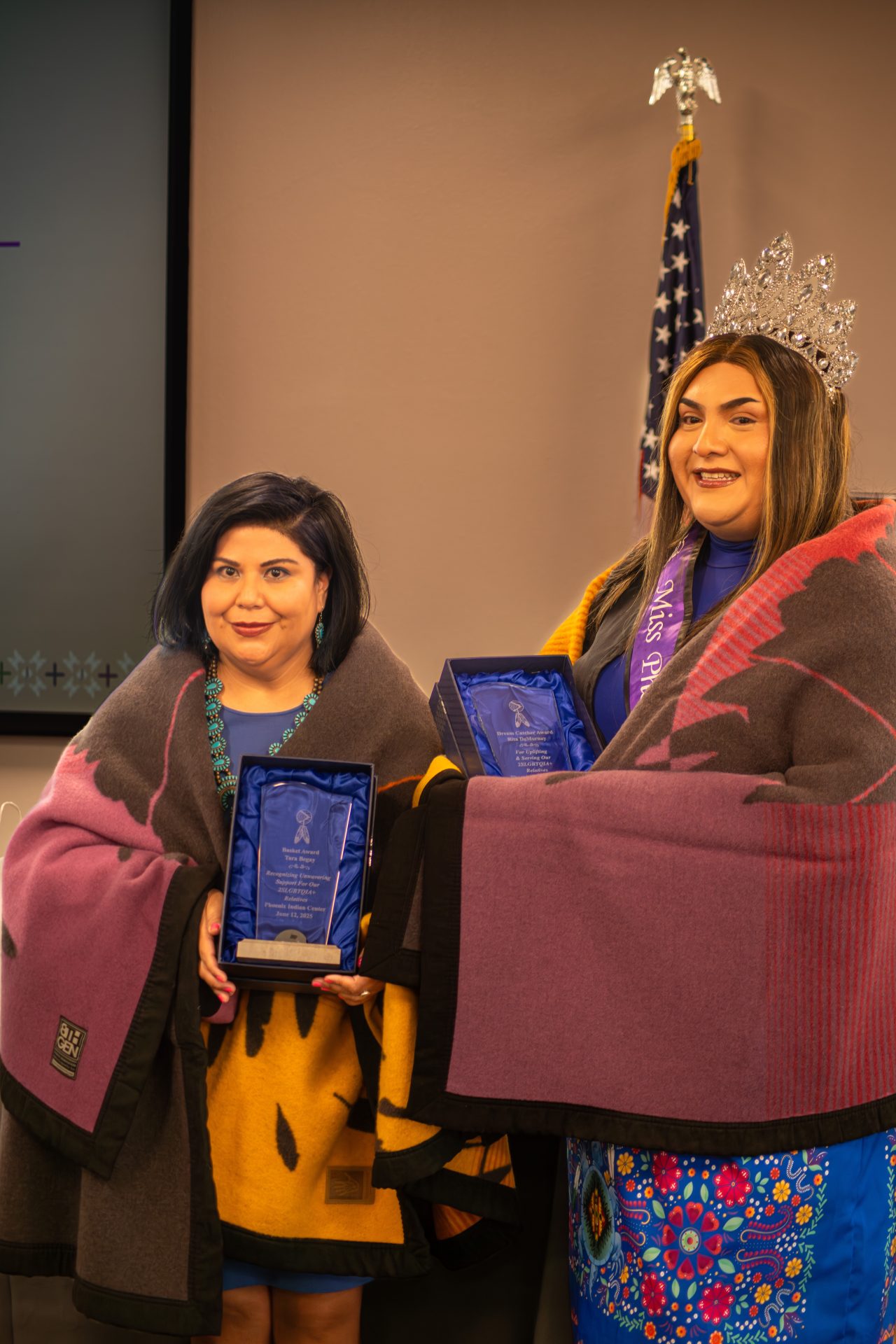VIEWS: 5287
September 2, 2020Engineering and Construction Services Project Update
The Salt River Pima-Maricopa Indian Community’s Engineering and Construction Services (ECS) department has been keeping busy during the COVID-19 pandemic. ECS continues to work on two major jobs that will benefit SRPMIC members and continues to focus on future projects that will be beneficial to all members for many years to come.
ECS construction managers Steven Pokrzywka and Harold Jones offered some insight into new developments that are currently in progress and projects we will see in the future.
NEACC and Repository
The two major projects in progress today are the Northeast Ambulatory Care Center and the Cultural Resources Repository. The NEACC project is funded by a grant from the Indian Health Service and is located at McDowell Road and Beeline Highway. The Repository is a tribally funded project for the SRPMIC Cultural Resources Department and is located at McDowell and Longmore roads.
“These construction projects have been making some great progress,” said Pokrzywka. “Both projects are going up vertical and making pretty good strides to stay safe from COVID-19. Contractors have been very strict on protocols and monitoring with the personal protective equipment (PPE) gear and reporting.”
Residential Treatment Facility and New Fire Substation
These two upcoming projects are currently in the programming and design stages. Planners are currently looking for a site for the residential treatment facility as they start the design phase. They are also looking for an ideal location for a new fire substation.
“We’re looking at the south part of the Community, because there will be a lot of future development within the next 10 to 15 years on the southwest border of the Community,” said Pokrzywka. “One of the challenges we have is tribal land; there is not a lot of tribal land available that is clear of environmental or archaeological encumbrances, so those projects are pretty tough to locate. We’re working with SRPMIC’s Environmental Protection and Natural Resources department to narrow down possible sites, and then we will get into the design phase on these projects.”
Gilbert Road Bridge and Hard Bank Project
Pokrzywka said that ECS is coordinating with the Maricopa County Department of Transportation to work on the Gilbert Road Bridge. This project is in the design phase, and on August 19, ECS presented to the SRPMIC Council the intergovernmental agreement with Maricopa County and the City of Mesa to continue the designing and construction. Construction on the bridge will begin in the winter of 2022.
The other project in that general vicinity is the Hard Bank in Lehi. ECS staff is currently working on a design and the environmental permitting with the U.S. Army Corps of Engineers to determine if they will need to obtain a permit under Section 404 of the Clean Water Act. The Hard Bank project focuses on the south bank of the Salt River from the Gilbert Road Bridge to Mesa Drive. The hard bank will protect Lehi during large water flows from releases at Granite Reef Dam. The purpose of the hard bank is to restore any erosion of the riverbank by giving it soil cement protection. The permitting process should be complete by this winter, and construction is anticipated to begin in the summer of 2021.
Drainage Diversion Channels
The Community constructed one of its first drainage diversion channels at the Talking Stick Golf Course last summer to help protect Casino Arizona at Talking Stick from future major storms.
“We currently have staff working on a Master Drainage Plan for areas north of the Arizona Canal in the Community,” said Pokrzywka. “That project [will] help flood mitigation in developed and undeveloped areas north of the Arizona Canal.”
SRFSI Projects
The ECS staff is also working with the Salt River Financial Services Institution (SRFSI) to help Community members build new homes or remodel existing homes.
“Housing has been a shortage here in the Community, and the cost of home construction continues to escalate, so we try to help those who have not built a new home or worked with a contractor in the past to coordinate some of the construction issues to meet the requirements of SRFSI,” said Pokrzywka.
Jones gives some insight on other tasks and projects that the ECS staff continues to work on:
• The Geographical Information System (GIS) Team is assisting SRPMIC Health and Human Services with maps related to COVID-19 tracking (active cases and number of people tested) on daily basis.
• ECS continues to assist Community members who have approved homesite ground leases with site plans, street addressing, and wet and dry utility coordination.
• A huge effort is underway with data cleanup related to right-of-way easements and service line agreements in the BIA’s Trust Asset and Accounting Management System (TAAMS) and the Land Title & Records Office. Saddleback Communications has used this opportunity to catch up on about 30 service line agreements that were never completed due to limited resources and the fast pace of commercial development in the Pima Corridor.
• Most of the bathroom renovation work and site assessments of the Salt River Senior Home Repair and Replacement Program are still on hold due to COVID-19 restrictions, so the architectural staff has been focused on an internal “design challenge” to come up with a new SHRRP two-bedroom replacement home with more storage space, fewer materials containing volatile organic compounds, and more energy efficiency.
• ECS staff is regularly collaborating by using Skype to keep commercial development, tribal facilities and SRFSI-funded home projects moving forward. The Design Division continues to have a short 10- to 15-minute huddle with the supervisors daily to help quickly resolve any issues, identify resource issues and promote collaboration.
• Staff is also using this time for more self-paced learning through webinars and online training, much of it offered free or at no cost to the Community.
ECS also is actively working on 10 right-of-way (ROW) projects; however, the landowner consents are taking much longer to obtain than normal due to the inability to hold landowner meetings or go door-to-door to talk with landowners at this time.
“We are having some success by leveraging postal mailouts, but this has probably been our biggest single setback,” said Jones. “Most of these ROW projects are residential in nature and related to federal Congestion Mitigation and Air Quality (CMAQ) grant funding.” The Community is making a huge effort to ensure every allotment has legal ingress/egress and tribal utilities and is taking steps to cut down on the amount of airborne dust released from the dirt roads during construction operations.
On any given workday (even during the Essential Workers-only phase), the ECS-Design Division staff is 75% to 95% operational during normal business hours through the use of telework and by leveraging technology.
“The use of a virtual private network, Cisco softphone, cell phones and Skype for Business has been a lifesaver,” said Jones. “Kudos to the Information Technology Department. Prior to the COVID-19 restrictions, only about one-third of the Design Division staff had the tools or working experience of telework, but six months into it, all 17 staff members have the ability to telework. However, there are some things that are difficult or more time consuming: landowner mailouts, face-to-face meetings are on hold, site assessments are on hold, we have a limited number of BIA computer terminals available for use at home for those working in TAAMS, etc. Staff is very grateful for the Community’s leadership, deliberateness and focus on keeping the Community members, staff and guests safe during this pandemic.”










